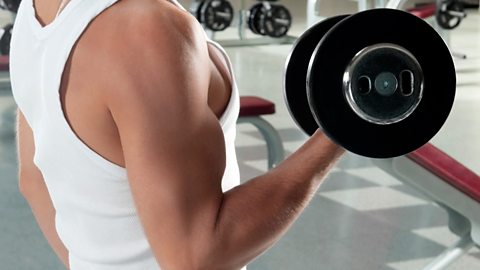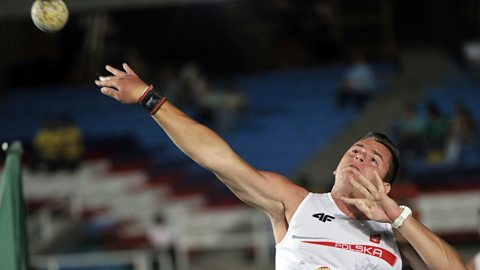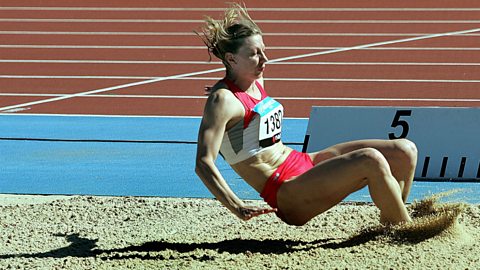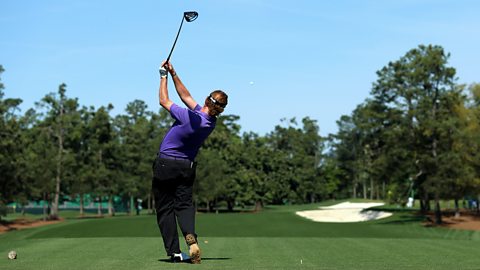Types of joint movement
Hinge joints allow flexion and extension only.
Flexion ā bending a joint. This occurs when the angle of a joint decreases. For example, the elbow flexes when performing a biceps curl. The knee flexes in preparation for kicking a ball.

Extension ā straightening a joint. This occurs when the angle of a joint increases, for example the elbow when throwing a shot put. The take-off knee extends when a high-jumper takes off (the other knee is flexed).

Ball and socket joints also allow flexion and extension.
Flexion of the shoulder joint occurs when the humerus (upper arm) moves forwards from the rest of the body, which happens at the end of an underarm throw or bowl in rounders. Flexion of the hip joint occurs when the femur (upper leg) moves forwards, which happens when long jumpers land or at the end of kick in football.

Extension of the shoulder occurs when the humerus moves backwards from the rest of the body, which happens at the end of the pull stroke in front crawl. Extension of the hip joint occurs when the femur moves backwards, which happens in the preparation for a kick in football, or in the back leg as a gymnast performs a split leap.
Ball and socket joints also allow types of movement called abduction, adduction, rotation and circumduction.
Abduction ā movement away from the midline of the body. This occurs at the hip and shoulder joints during a jumping jack movement.

Adduction ā movement towards the midline of the body. This occurs at the hip and shoulder, returning the arms and legs back to their original position from a jumping jack movement or when swimming breaststroke.
Circumduction ā this is where the limb moves in a circle. This occurs at the shoulder joint during an overarm tennis serve or cricket bowl.

Rotation ā this is where the limb turns round its long axis, like using a screw driver. This occurs in the hip joint in golf while performing a drive shot or the shoulder joint when playing a topspin forehand in tennis.

The table summarises the body locations and types of movements associated with each type of joint.
| Joint | Type | Bones | Movement | Comments |
| Elbow | Hinge | Humerus, ulna, radius | Flexion, extension | Biceps and triceps move this joint |
| Knee | Hinge | Femur, tibia | Flexion, extension | Quadriceps and hamstrings move this joint |
| Hip | Ball and socket | Femur, pelvis | Flexion, extension, abduction, adduction, rotation, circumduction | Not as great a range of movement as the shoulder, but much more stable |
| Shoulder | Ball and socket | Humerus, scapula | Flexion, extension, abduction, adduction, rotation, circumduction | Greater range of movement than hip, but not quite as stable |
| Joint | Elbow |
|---|---|
| Type | Hinge |
| Bones | Humerus, ulna, radius |
| Movement | Flexion, extension |
| Comments | Biceps and triceps move this joint |
| Joint | Knee |
|---|---|
| Type | Hinge |
| Bones | Femur, tibia |
| Movement | Flexion, extension |
| Comments | Quadriceps and hamstrings move this joint |
| Joint | Hip |
|---|---|
| Type | Ball and socket |
| Bones | Femur, pelvis |
| Movement | Flexion, extension, abduction, adduction, rotation, circumduction |
| Comments | Not as great a range of movement as the shoulder, but much more stable |
| Joint | Shoulder |
|---|---|
| Type | Ball and socket |
| Bones | Humerus, scapula |
| Movement | Flexion, extension, abduction, adduction, rotation, circumduction |
| Comments | Greater range of movement than hip, but not quite as stable |